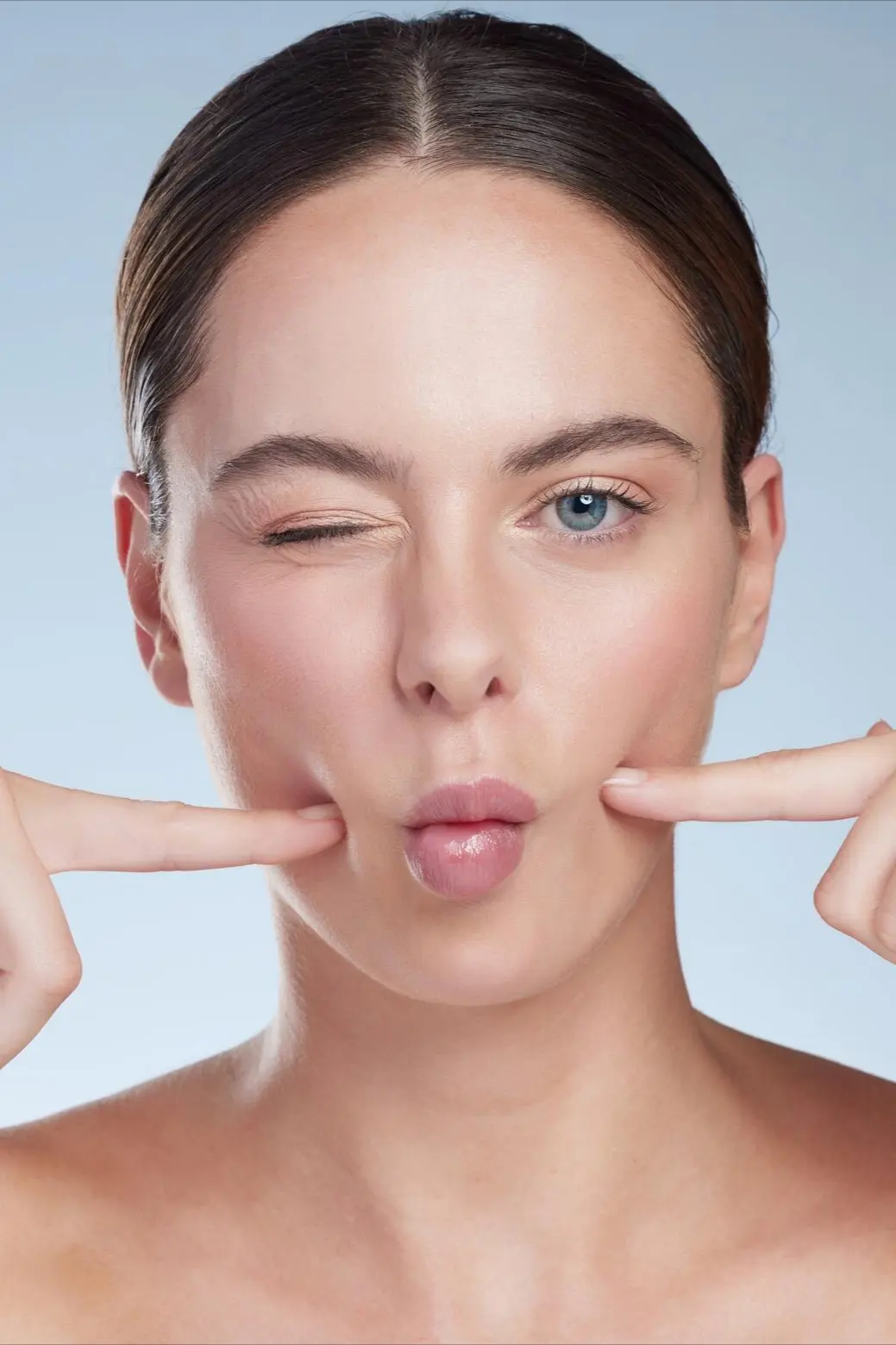
© © Freepik
March 3, 2025
Judith Cyriax
- Beauty
- Health
From "Russian Lips" to "Piggy Nose" – questionable beauty corrections
Why aesthetically questionable results are increasingly in demand for beauty corrections

© © Freepik
March 3, 2025
Judith Cyriax
Why aesthetically questionable results are increasingly in demand for beauty corrections
Fresher, healthier, more radiant, and in most cases, preferably a bit younger too. The trend in cosmetic surgery is increasingly leaning towards naturalness , according to the statements of plastic-aesthetic surgeons . The patients' desire: The exterior should not be completely changed; rather, one simply wants a “better version of oneself.” Nevertheless, in reality – especially on social media – one often encounters faces that anatomically shouldn't exist: misplaced eyebrows, giant lips, too narrow noses, or dimples that resemble pits more than anything else. That's one phenomenon. The other – many of the treated faces seem to have the same (doctor) parents, as they all resemble each other in one way or another.
We spoke with Dr. Caroline Kim , specialist in Plastic and Aesthetic Surgery, on the desire for optimization, changing beauty ideals, and why the eye for the right measure is still lost.

© Freepik
In cosmetic surgery, lips are a popular object of enhancement.
How can it be that in aesthetic medicine, naturalness is propagated when there are more and more faces that hardly look natural? Keyword Russian Lips, Piggy Nose, or Bullhorn Lift.
Trends keep emerging, some lasting longer than others. With Russian Lips, the focus is on enhancing only the central lip area, the so-called heart shape, with hyaluronic acid instead of increasing the overall lip volume. This exaggeratedly full lip center may not be natural, but a beautiful result can still be achieved. The so-called Bullhorn Lift, on the other hand, reduces the distance between the upper lip and the tip of the nose, making the red of the lips more visible and emphasizing the Cupid's bow – both attributes of a youthful face.
In itself a simple procedure, but unfortunately, the scar it leaves often runs as a permanent visible line below the nostrils. As for the Piggy or Hedgehog Nose: The nose is shortened and lifted so that you can look straight into the nostrils. A completely absurd endeavor that has not really been established in Germany so far. These are, of course, extreme examples, but even classic procedures do not always have beautiful results. Every now and then, you encounter a face that makes you inevitably think: What does that look like?
You actually only see what didn't go optimally in a procedure. Why? If there is an aspect of the face that is so dominant that it catches the viewer's eye, you can't help but focus entirely on it. That Brain wants to see a coherent whole at all times, but cannot do so, for example, with an overly exaggerated lip, as the overall harmony is disturbed. Everything that is very well done, on the other hand, is not noticeable. And fortunately, most treatments are very satisfactory.

© Freepik
The expertise of doctors has evolved. The principle of "once learned, always applied" no longer holds true.
But how can it even come to the point where one looks so obviously unnatural?
When one opts for an aesthetic measure, they often letsomething be changed that has been bothering them for a while. Usually, this is a rather small intervention, but it triggers a quite positive effect. In the patient themselves, but also in their surroundings. One feels more attractive, younger and more vital , and receives compliments. Many want to enhance this effect, hoping that with more procedures they will look even better. And in doing so, they sacrifice their naturalness to their own ambition for perfect attractiveness. A fallacy, because too many treatments usually result in the opposite.
Wouldn't it then be the doctor's responsibility to intervene here?
Absolutely, but unfortunately there is always a doctor somewhere who continues. We call this over-therapy.
Beauty trends don't just change over time; treatment methods and surgical techniques also become more innovative and improved. Unfortunately, you can see this in people who had something done, for example, 20 years ago. Why is that?
In general, the techniques used back then and the results achieved no longer meet today's standards. For example, a few years ago, it was still assumed that fillers were the key to maintaining youthfulness. Today we know that while you can fill a nasolabial fold with fillers, the filler can migrate here, as well as in other places. In the case of the nasolabial fold, it tends to migrate outward and upward, so that in the end, the fold becomes much more pronounced and noticeable. The next step is then a desire for a lift, although actually the filler would be better dissolved.
The know-how of doctors has also changed. It is no longer: once learned, always applied. Through numerous training courses, medical congresses, and of course, their own experiences and insights, we doctors can achieve significantly better and more natural results.

© Freepik
Beware of the so-called buccal fat removal, as this procedure is permanent, and in older age, the exact fat in the cheeks is missing, leading to a hollow appearance.
Can the mistakes of the past be effectively treated or corrected, and how can this be avoided in the future?
When dealing with very experimental people, it is sometimes not that easy. Some things can be undone, others unfortunately not. A botched lower eyelid lift for example, is not easy to correct. Hyaluronic acid Encapsulated or migrated into tissue can be easily dissolved. And there is no need to fear that the antidote, called hyaluronidase, will also remove the body’s own hyaluronic acid, because it is constantly being regenerated.
What should be observed very critically, however, is the currently so hyped buccal fat removal. Here the cheek fat is surgically removed, which makes the face slimmer, cheekbones appear more defined, and also the cheekbone and jawline are more emphasized. However, since this procedure is permanent, exactly this fat is missing in old age, which leads to a sunken appearance and ultimately makes patients age faster. I personally would always advise against it.
While with older patients one often has the feeling that something is not right here, it is primarily young women who decide on aesthetic procedures that give them a standard look – away from individuality towards a kind of conformity of facial features.
One can certainly find the answer in social media, where influencers , models or actresses certain beauty ideals such as fuller lips or more defined eyebrows, creating a uniform look. And since young women often strive to emulate the visual ideal of their role model, they opt for these aesthetic changes. Fortunately, these are minimally invasive procedures, so they can be reversed or they naturally fade over time, keyword Botox. Additionally, the desire to look like someone else is known to decrease with age.
How does one achieve a natural result with a minimally invasive or invasive procedure?
The focus is on achieving a certain harmony and softness of appearance, which is often achieved by breaking repetitive directional impulses. A simple example: If a person has droopy eyelids and slightly downturned corners of the mouth, the face appears tired, sad, and old. If I only remove the droopy eyelids, creating an open gaze, the corners of the mouth don't weigh as heavily - the face looks happier. Conversely, if a bothersome mole is removed, nearby wrinkles appear much less noticeable, as the gaze is no longer sharply focused on that region.
Also good to know: Vertical wrinkles and scars are much more noticeable than horizontal ones. Therefore, it's always worthwhile to treat the so-called frown line and lip wrinkles to make the whole face look fresher. If you will, we create optical illusions by cleverly diverting attention away from small optical imperfections through treatments. In aesthetic medicine, there are generally a few rules to ensure that the patient and their surroundings don't experience any unpleasant surprises.
We specialist doctors can already achieve a great effect with small interventions by balancing asymmetries and disproportions, for example, and reducing detail perception through this harmonization. Quite often, it turns out during the first consultation that there is much less need for action or treatment than initially assumed by the patient.